The Dark Art Of Vismigging, part two – Leading Lines
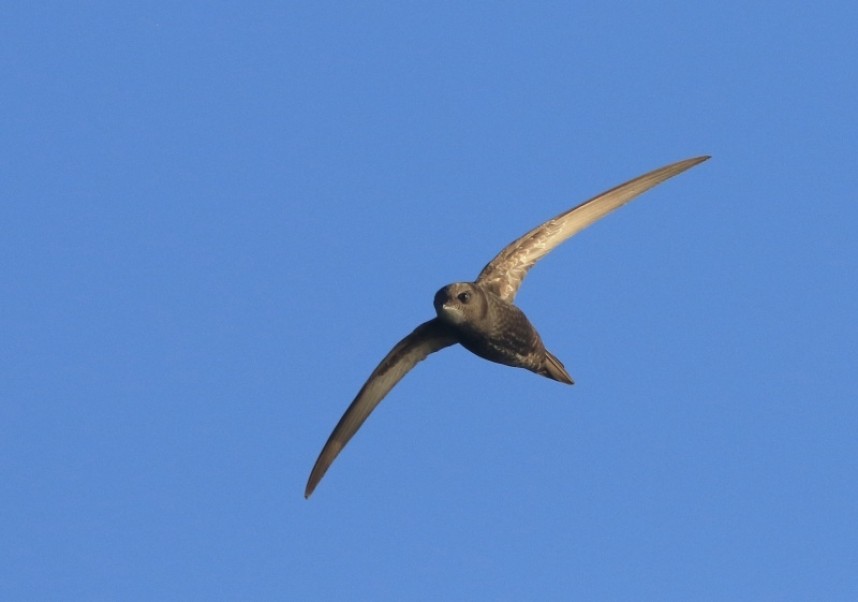
Common Swift - a vismig favourite, especially when it's the first of the spring! © Mark Pearson
Visible Migration – aka Vismig – is, literally, the kind of bird migration that can be seen and enjoyed first hand. Not just the theoretical migration of those birds which we 'know', through scientific studies and many years of dedicated observations, have journeyed from A to B and (if they're successful) back again, but the bear-witness, live-action kind that we can savour as it happens around us.
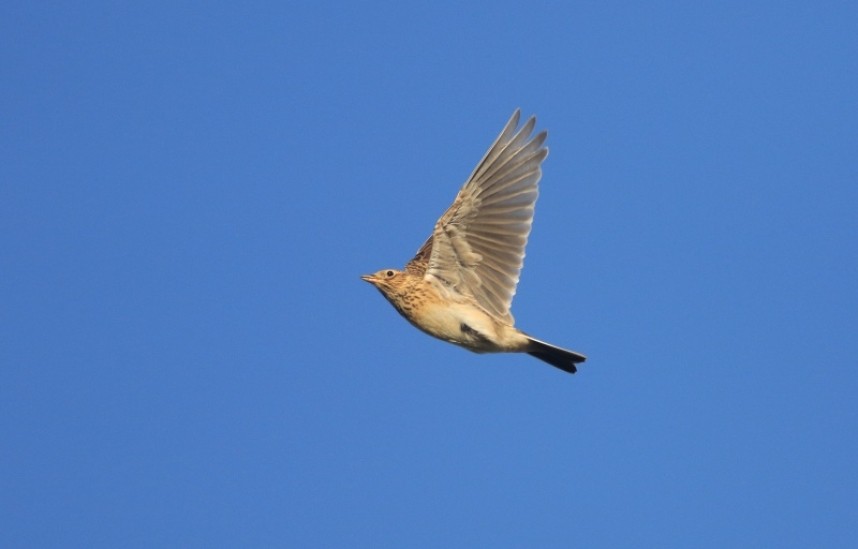
Early spring and late autumn are the peak periods for Skylarks © Mark Pearson
I'm fortunate to live at a relative hotspot for this widely accessible but rarely accessed phenomena – on a 'leading line' on the western edge of the North Sea, in the Filey area of North Yorkshire, England. Part One described the different types of vismig, before going on to focus on birds arriving 'in-off' – i.e. making landfall here on the coast after a perilous sea crossing. In the following paragraphs, however, we'll look more closely at a type of vismig that is by no means exclusive to promontories, headlands and peninsulas, and in fact accounts for the vast majority of vismig records, observers, hotspots – the leading line type of vismig.
What do we mean by a 'leading line'? In simple terms, a geographical or topographical feature that 'leads' migrating birds in a certain direction. This could be a gentle slope, a more dramatic ridge, a coastline, or even just the edge of two distinct habitat types; the only essential common denominator being the direction of the leading line it creates, and how it corresponds to the 'flow' of prevailing migration in spring and / or autumn.
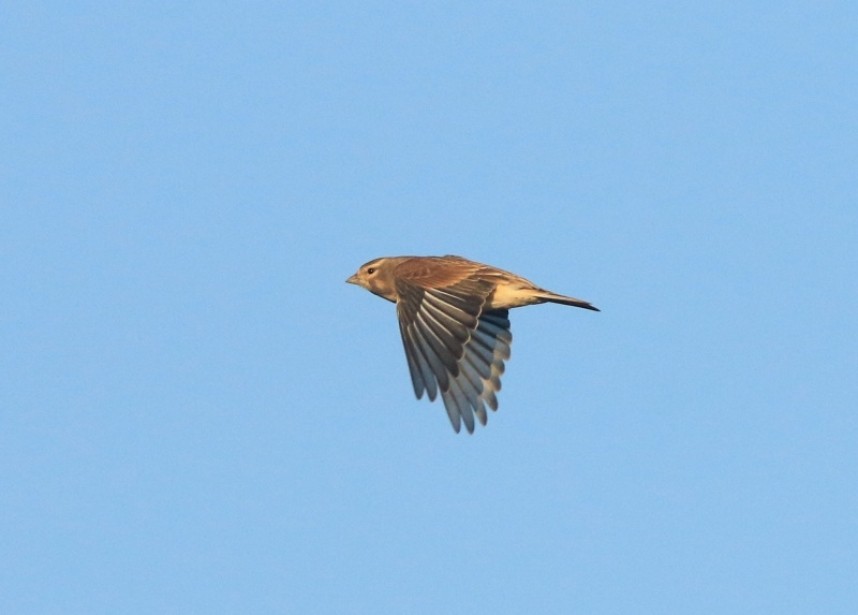
Linnets are one of the commonest finches in local vismig counts © Mark Pearson
Here on the North Yorkshire coast, 'leading line' vismig is prevalent from March to May and from August well into November (and even, to a lesser degree, outside these windows), but as with most other aspects of migration here, autumn is the peak period. Wherever you're vismigging, wind and weather conditions pull the strings – or, rather, turn the migration tap on and off at will.
I've enjoyed and experimented with several spots in recent years, but for now at least have settled on Reighton Sands, where my watchpoint sits on the curve of the bay. When looking North-west (towards the majority of approaching migrants in autumn), I've the sea to my right, a wonderful heightened panorama over the land in front of me, and the huge, imposing chalk cliffs of Bempton behind me.
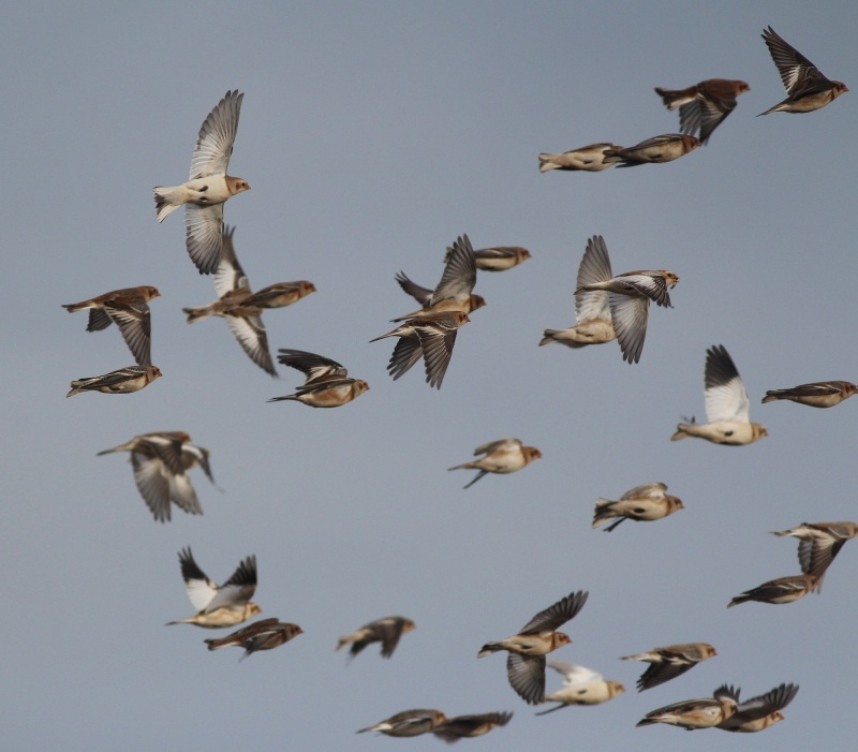
Snow Buntings – late autumn vismig gold! © Mark Pearson
Being positioned on a relatively 'smooth' line of the coast is an important factor, and better still, on a coast running roughly north – south. In this respect, I'm in a good position for encountering vismig whatever the conditions, and some larger species (geese and swans being prime examples) will follow the coastline as their default, as countless generations of the same species have before them.
Such examples aside, it can be very unpredictable without favourable winds and conditions; but when they come together at the right time, they can provoke awe-inspiring movements of songbirds and more as the skies come alive right above (and alongside!) your head. Ideal conditions consist of a change in pressure from high to low, and a moderate wind from the south-west. Why? Well, when passerine migrants are on the move, they may well do so over a broad front – but the South-westerly wind pushes them towards the coast and funnels them along a narrower leading line, and in order to avoid the wasted energies and dangers of a non-essential over-sea leg of their journey, they will hug the coast as they push on.
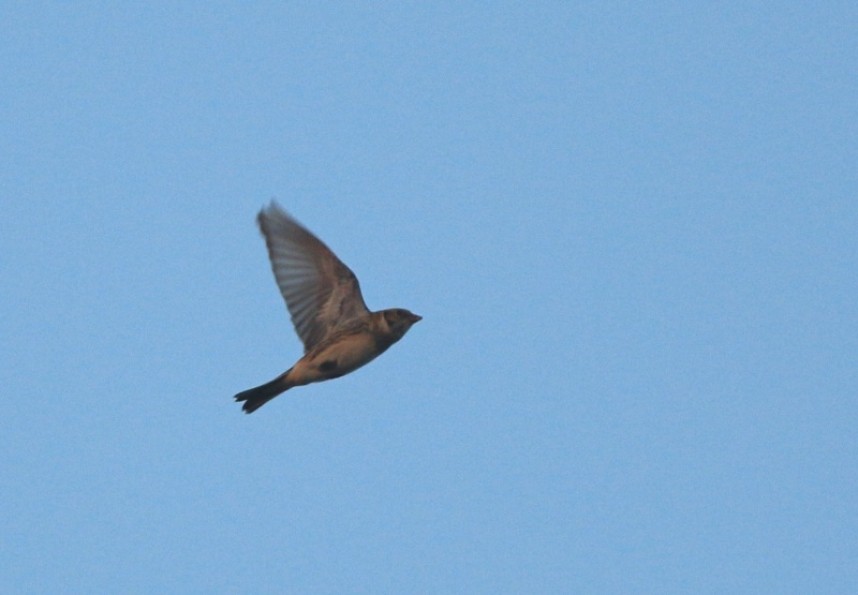
A high-flying Lapland Bunting can be tricky without calling.... © Mark Pearson
In the autumn, such movements begin in earnest in early September, and continue right through to mid-November, and with the above conditions conspiring, there will be movements throughout the period as a fascinating, overlapping species dynamic unfolds. September is often the most productive month, and also the most diverse, with various insectivorous and trans-Saharan migrants – Swallows, House Martins, Yellow Wagtails and more – gunning south, with steadily increasing numbers of Meadow Pipits (one of our 'big' species here), Siskins, and a variety of other finches and buntings. It's not all about passerines, of course, and Pink-footed Geese begin to move early in the month, followed by the first Whooper Swans, and various waders and wildfowl are a daily occurrence; and as the month wears on, numbers increase as flocks of various sizes and species bound relentlessly south.
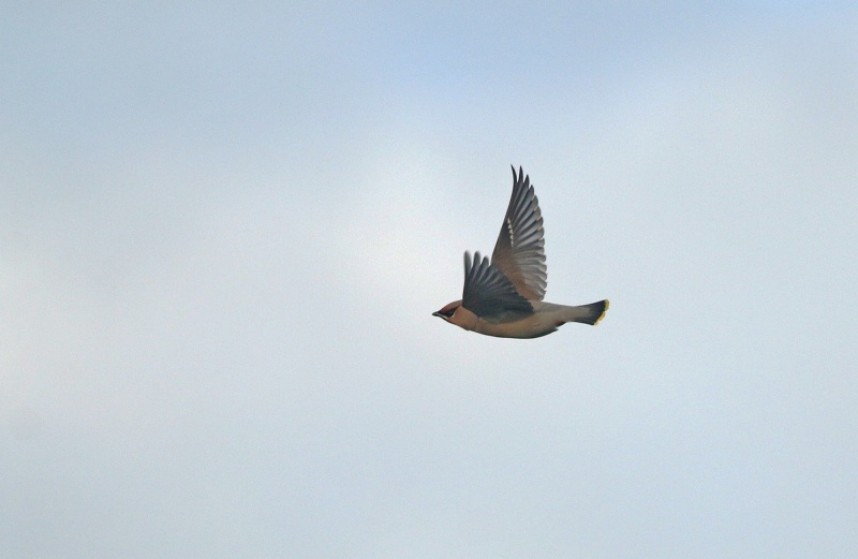
The occasional Waxwing is a real treat during autumn vismig sessions © Mark Pearson
By now, the species dynamic includes Linnets, Tree Sparrows, Chaffinches, Grey and Pied Wagtails, Greenfinches, Reed Buntings, Yellowhammers, Song Thrushes, Goldfinches, Redpolls, Bullfinches and more, and the number of these species steadily grow as the month wears on; a good morning in mid- or late September can see big numbers of many different species, and the pleasingly overwhelming feeling of a constant flow of birds pushing on instinctively above and around you.
As October continues, then numbers of trans-Saharan migrants diminish, but the the finches, buntings and sparrows continue, geese and swans become more regular and numerous, and a whole new suite of species enter the notebook – hardier types more associated with late autumn, including Redwings, Fieldfares, Bramblings and Starlings. Ring Ouzels feature in small numbers among more numerous Blackbirds, and there's always a chance of a rare treat – Lapland and Snow Buntings are annual in small numbers, and on a lucky day, a Waxwing or a Hawfinch will add a little spice to proceedings.
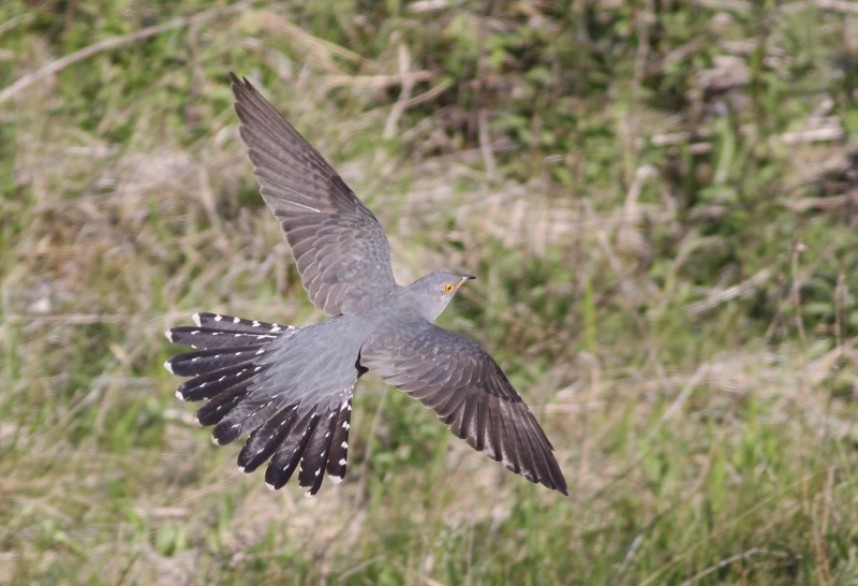
A low-flying Cuckoo is a rare and decreasing sight in spring © Mark Pearson
While some species carry on regardless – wildfowl, Meadow Pipits and Hirundines being notable examples – as a rule, it's the few hours of light that see the vast majority of visible migration occurring. Arriving at your vantage point just as dawn breaks and seeing the first few groups of passerines beginning the latest leg of their journey in the half light is a thrilling sight, and can often be followed by a hugely entertaining few hours of pure natural entertainment, thumb-aching clicker-clicking and frantic notebook scribbling.
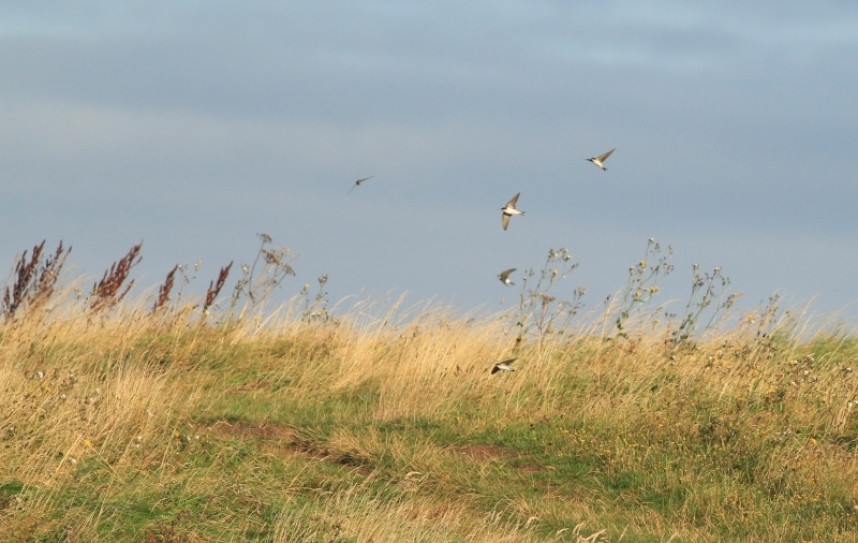
The skies can come alive with hirundines when the right conditions conspire © Mark Pearson
With a moving target, often in less-than ideal light and (crucially) often in view for just seconds, familiarity with flight behaviour and style, and the general appearance of a certain species in flight, is essential; just as (and often even more) important is a familiarity with their flight calls. These skills are learned and honed over time, and can seem extremely daunting to the beginner – but with plenty of practice, and ideally a good mentor, it's amazing how quickly the basics fall into place.
You could say I'm privileged to live in a place that combines all the factors that add up to a near-perfect mix for enjoying visible migration, especially with the coastline playing such an important part here. But, as mentioned, quality visible migration is by no means dependent on such features, however, and you really can experience it anywhere; in the local park, in the garden, and from your bedroom window.
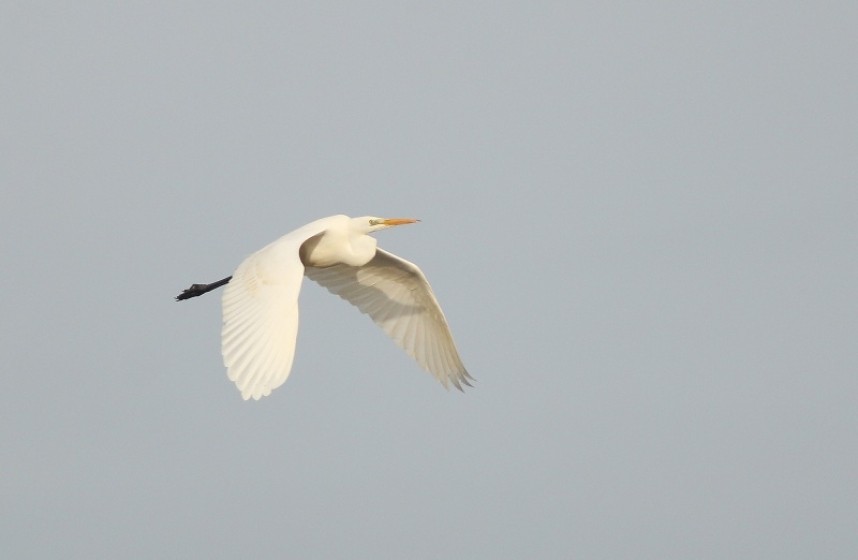
Great Egret – once a mega rarity, now annual in small numbers © Mark Pearson
Before moving back to the Yorkshire coast some seven years ago, I lived and birded bang in the middle of central east London, in a landscape shrouded in concrete and steel and essentially bereft of any natural features. And yet, with effort and a growing sense of the possibilities, I had unforgettable vismig experiences deep in the dark heart of the capital; whether from the ground level of my local patches in Hackney, or from the 13-storey high rooftop of a tower block overlooking my beloved Stoke Newington Reservoirs (now rebranded Woodberry Wetlands).
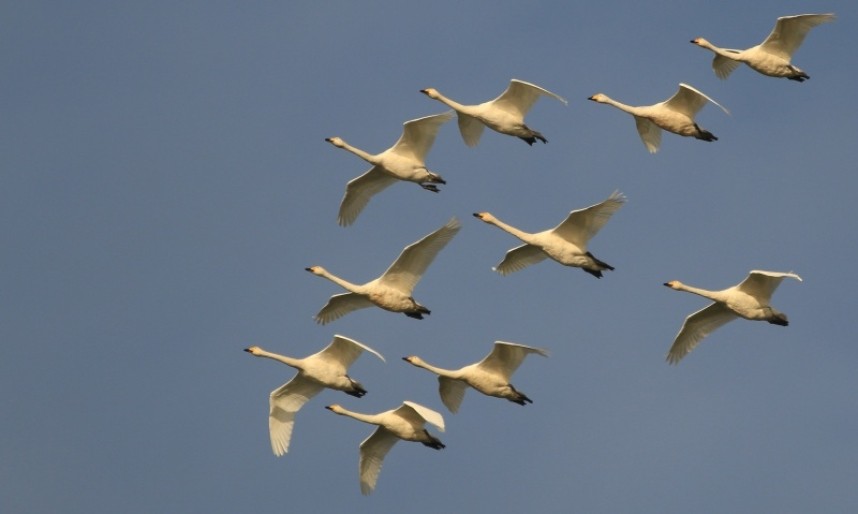
Whooper Swans are one of the star species of autumn vismig here © Mark Pearson
Over the five or six years of dedicated patch-working in the area I spent plenty of time vismigging, and there are numerous highlights to remember. In spring, annual Honey-buzzards, Ospreys and Red Kites, as well a Black Kite, Red-footed Falcon and other show-stopping treats; in autumn, Lapland Buntings, Waxwings, White-fronted Geese, Golden Plovers, huge Redwing, Lapwing and Skylark movements and much more were just some of the unforgettable returns from my days in the middle of the urban sprawl. So if you think vismigging is the preserve of coastal hotspots, think again; try a promising place nearby and see how it goes – you could be pioneering a vismig goldmine!
Mark James Pearson YCN Guide
To experience the excitement of east coast migration birding first hand, join one of our Autumn Migration Special Days led by Mark. For more info Click Here



 Back to Blog
Back to Blog
